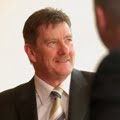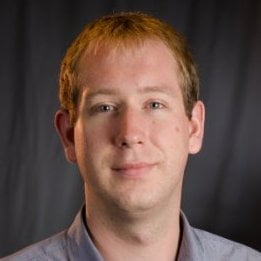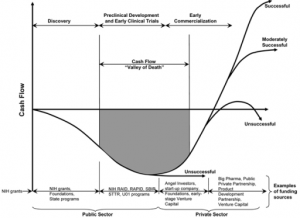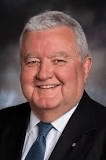SEMIP
Today I was at the SEMIP Innovation Showcase 2012. If you aren’t aware, SEMIP is the South East Melbourne Innovation Precinct and aims to improve collaboration between manufacturers in Melbourne’s South East and Research and Innovation providers, principally the CSIRO and the Tertiary Institutes and Universities.

SEMIP
I took some notes and thought I’d share the highlights with you.
Predicting Future Trends
Dr. Stefan Hajkowicz of the CSIRO shared some research findings on future trends from the CSIRO Global Foresight Project. He also did a comparison of Australia and Switzerland looking at what we can learn from a country that has already made the transition we need to make now that we are a high cost economy.

Dr. Stefan Hajkowicz
The take away message for me on this is that Australia had better focus on making higher value products and providing high quality experiences to our customers. The mining income stream is currently in boom but productivity is declining as we tap out the richest ore bodies and need to work harder to extract new material from poorer ore sites. So we have to make sure we have something of value to offer once that runs out.
Switzerland has positioned itself in a few sectors and is doing very well. Some examples of these sectors are:
- Chocolate
- Watches
- Financial Services
- Precision Machine Tools
- Pharmaceuticals
And they have a signature product, the Swiss Army Knife.
One of the Questions raised by Stefan was “What is Australia’s signature product”? If you have some ideas, please post them as comments. I’m still thinking about that particular question but it would be good to have a list to consider.
Clean Green Technology
There were three presenters in this breakout session and three very different stories.

Peter Voigt
Peter Voight shared the story of Clean TeQ who provide water and air purification products and had to bootstrap their company the hard way, all funded themselves, until they got to the size of going public in 2007. Perter gave an interesting analogy to the current climate debate.
What do you do when the oil warning light on the dashboard of your car comes on while you are driving?
- do nothing – it probably doesn’t mean anything
- do nothing – it is a conspiracy by the oil moguls to force you to buy more oil than you need. There isn’t anything really wrong.
- pull into a service station, get some oil and put it into the vehicle
By implication he suggests that we should all treat the current trend in the environment seriously because ignoring it will lead to a disaster. I agree. We can do much better at looking after this planet than we currently do. And even if the environment does turn out to be less fragile than some fear, reducing pollution and cleaning up our act is the right and best thing to do either way.
Peter also described the process Clean TeQ went through to get up and running and how hard it was. A process he called the “Valley of Death”.
My take away from Peter’s talk was that we need to better support viable and valuable business start-ups in Australia.

Marcel Kamp
Marcel Kamp of Marand Precision Engineering shared about their commercialisation of the CSIRO high efficiency electric motor for solar racers. The CSIRO had an efficiency of 97.4% and Marcel shared how they were able to lift it to 98.3% and also make it a viable product to manufacture.
I’ll skip the engineering details this time because my key take away was that the CSIRO are a valuable and cost effective resource where your need and their projects or capabilities overlap, but you need some persistence with the process. However once you are connected, then other opportunities can flow in both directions. This is a classic SEMIP success story.

Roger Knight
The final speaker in this session was Roger Knight of AquaDiagnostic. He shared about their PeCOD technology which came out of the University of Queensland and measures organic pollution levels in water using a process that takes minutes and doesn’t use hazardous chemicals. The standard test takes hours and uses very nasty things like Mercury and Sulphuric Acid. They are now selling test kits and equipment around the world. The technology is manufactured at the STC in Melbourne and protected by patents and meets a need that will only grow in time.
My key take away was that if you have a good idea, you might have to move to the right place in order to get it to market. By moving to the STC, AquaDiagnostics placed themselves in the middle of the cluster of companies, like MiniFab, that became pivotal in their success.
How to build a company
Amanda Gome of SmartCompany then shared her story of leaving her job at BRW to set up SmartCompany, and her philosophy on how to go about it. I was very impressed. Amanda is a passionate and articulate presenter who clearly lives the lessons she shared with us.

Amanda Gome
Here is the executive summary:
- Don’t stuff up the message – stay on message and stay clear
- Don’t lose focus
- Innovation must be integral. Don’t be scared of the word – think of it as problem solving.
- Make it easy for people to buy from you
- Don’t hate your competitors – some you can make friends and do profitable deals with
- Don’t be a ‘me too’ – set a high barrier for competitors to have to hurdle
- Start with enough money
- Don’t sell yourself cheap – in fact, always look at how to charge more
- Don’t hire duds – if you do, fire them as quickly as you can
- Don’t run at a loss
- Don’t stick your head in the sand – stay aware of news, industry trends, what others are doing
- You job is to lead and strategise, let others execute
- Don’t be afraid to offer equity – you will need capital if you build a successful growing company
- Don’t do old style business plans – constantly review and be agile
- Don’t be afraid of your staff, empower them and let them get the job done. They should know how to make the decision themselves.
- Don’t hate nerds. These days we are all technology companies. Embrace it.
- Don’t burn out. Your greatest value comes from longevity so look after yourself
And Amanda told a funny story about the day she forgot her skirt. The lesson being that things won’t always go well, but deal with it and move on.
My take away is this. If you are going to do it, then do your homework, point it in the right direction, and go for it with courage and conviction.
Doing business with Siemens
Jurgen Schneider then shared how Siemens views the world and how to go about doing business with Siemens. Siemens is huge with 460,000 employees, R&D groups everywhere and $4B in R&D this year. And Siemens has structured its business around the four mega trends they identified at the start of this century:
- Climate Change
- Demographic Change
- Urbanisation
- Globalisation

Jurgen Schneider
So to engage with them, you have to be able to know how what you have is relevant to one of their offerings in one of these mega trends. Be specific. Be sure your business pitch is carefully thought out and offers value to the potential partner. And Jurgen gave six tips for presenting and for engaging with Siemens:
- Be unique. You have to offer something they can’t get elsewhere.
- Remain Persistent. The likelihood you get in front of the best person first time is low in an organisation that big. Keep trying. One ‘No’ means very little.
- Think Big. Siemens will want it in large quantities if it goes ahead. How will you scale up?
- Plan for fast growth. Show the plan. Justify it.
- Prepare for scrutiny. After you get an MOU, the Siemens contracts team will go through you very thoroughly. Prepare for one of your key people to be completely consumed for six months by this process.
- Build on existing friendships and partnerships. Who you already know could be able to introduce you to the right person.
That sounded pretty daunting. But it helps to know in advance. My take away was that if you want a slice of the Siemens pie, you have to be prepared to do what it takes to get that.
Bionic Eye
The final session was on the Bionic Eye project.

Professor Arthur Lowrey
Professor Arthur Lowrey showed what the project looked like from the Monash University perspective and I was impressed by how practical and pragmatic he and his team were. This is an excellent example of how industry and Tertiary Institutes can collaborate to great effect.
My take away is that you need a team to do a project like this, and there are a lot of elements to that team. This is hard core biomedical and so their are people who will get operated on and have electrodes put inside their skull by surgeons. So it isn’t just electronics and software. Sure there is a lot of that, but it is also all the other things you need to for a project like this.

Erol Harvey
Erol Harvey of MiniFab then shared in their role in creating new ways to package the electrodes and electronics that get implanted. This is brand new technology. And the research on this project is being done by each of the three partners. This is not a classic University IP sold to an industry partner to commercialise. Everyone is creating new IP.
My take away from Erol’s presentation is that we need to keep advanced manufacturing alive and well in Australia if we want it to remain the country it is today.

Jefferson Harcourt
The final presenter was going to be Jefferson Harcourt of Grey Innovation who are doing the PCB, ceramic hybrid and core software design for the product. Unfortunately for us, Jefferson had to leave early as his wife had gone into labour. But it is clear that this is a project in which everyone is pulling their weight big time. I was looking forward to Jefferson’s presentation as we have previously done some business supplying Grey Innovation with specialist R&D services and they handle a very interesting mix of projects.
Government Support For Manufacture
We concluded with a speech from Mark Dreyfus MP in his role as minister for Climate Change and Energy Efficiency.

Mark Dreyfus MP
The government wants forums like SEMIP to succeed and recognise the value of local manufacture. Clean Technology funding will allow local manufacturers to improve their energy efficiency, and that is a good thing. But there isn’t much being allowed for creating the new technologies that will allow that process to continue, or that will result in new products, new companies and new jobs in the region.
My take away from this is that you have to find a way to do it yourself. The government is not going to fund it for you.
Successful Endeavours specialise in Electronics Design and Embedded Software Development. Ray Keefe has developed market leading electronics products in Australia for nearly 30 years. This post is Copyright © 2012 Successful Endeavours Pty Ltd




















